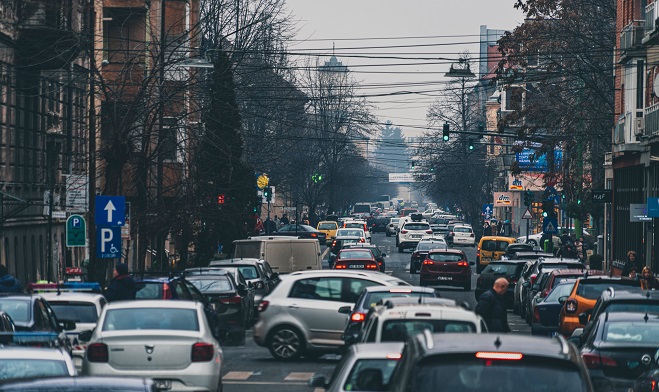
Traffic to your store doesn’t matter
Note: This is an opinion piece by the Metrilo marketing team. Its purpose is solely to offer a new angle of looking at things. It’s healthy to challenge our ingrained beliefs from time to time!
Ecommerce store owners struggle to increase traffic to their sites all the time. Traffic is probably the most popular topic in any seller discussion group. The first question newbies ask is, “How do I get traffic?”
Well, maybe that’s wrong. Maybe that’s the wrong thing to focus on.
Traffic doesn’t matter if you don’t sell anything. Having 100 or 1,000 people on your site does not mean a thing if it doesn’t result in a sale. We know the assumption is that by increasing your traffic (let’s say 10-fold), you’ll get 10 times more sales. But that means you keep your current conversion rate.
2% conversion rate means 2 sales with 100 people traffic and 20 sales with 1,000 people traffic. That’s why it seems logical to pump money into traffic, hoping for statistics to work out in your favor: “If I get more people in, I’ll get more orders.”
But how can you be sure you’ll keep the conversion rate?
When widening your reach to get more people in, how can you know the same percentage will convert? Are they still your target group? Why do you need people who would never buy from you browsing your site?
Related: Defining your target persona
This positive correlation seems a bit overrated.
Does this mean you can expand indefinitely until you manage to convert 2% of the world population? This assumption falls short in taking into account your market size.
Related: Estimating your market size
Unfortunately, every business has a cap to its market size. So increasing traffic will start having diminishing returns when you reach outside of your market.
One day you will run out of new potential target customers to reach. How do you grow then? Definitely not by paying for site visitors.
So, it turns out, what you actually need is more conversions. A higher percentage of traffic placing orders. It’s good that this is the second most talked about problem in ecommerce – optimizing conversions.
This makes more sense now. Getting more sales from the traffic you have.
It’d be great if you could convert 100% of your traffic, right – even with 100 people today, that’d be 100 sales. No wasted traffic, no clicks in vain.
However.
Each sale comes at a cost: COGS, acquisition cost, handling cost, shipping cost, even customer service. 100 orders today mean you have to deduct all those costs 100 times from your revenue because each one is from a different person, handled separately.
So there’s a catch to that 100% conversion rate. Increasing it to the maximum won’t necessarily increase your revenue.
How to get more revenue with the same traffic and conversions then?
Possible solutions:
- Lower COGS – if done transparently as brands like Everlane do (eliminating the middlemen and their margins), it’s fine; otherwise, saving on materials, design and work ethic is not a good option as it means lower quality
- Increase average order value – the consolidated handling, shipping and service saves costs
Related: Increasing average order value
- Increase customer lifetime value – the customers you convert once come to shop repeatedly so revenue is generated without marketing spend on new customers
Our experience shows a focus on CLTV works best because 1) you cannot lower costs indefinitely and 2) you can only push AOV up to a point.
Higher customer lifetime value means more revenue with the same traffic and conversions.
If you get 100 people a month and convert 10% of them, that is 10 sales. But if you manage to retain 20% of people (retention rate = 20%), this would mean next month you have 2 sales to old customers at zero cost. This is on top of the regular customer acquisition you do (so 10+2 sales). If you have a bad month in acquisition, old customers might be what keeps you afloat.
Why aren’t more ecommerce brands prioritizing CLTV? Why do you want to bleed money for new acquisitions? Why is everyone concerned with getting unqualified traffic instead of selling repeatedly to happy customers?
If you make customer retention your priority, you might even stop worrying about traffic altogether. When we worked with Native Cosmetics, over half of their sales came from repeat customers so they could spend less on marketing and more on improving their product that got even more loyal fans and eventually sold to P&G for $100 million cash.
Customer lifetime value is also an indicator of customer love for your brand. Random site visitors don’t add anything to your brand’s value. Conversions do in a way, but still they are a numbers game. But your retention rate is something to brag about in front of investors.
The bottom line is getting more repeat orders from your existing customers will save you acquisition costs while increasing revenue. So more revenue at a lower cost. Stop focusing on traffic that doesn’t mean anything and embrace the limitations of conversions. Work with the happy customers you got and keep them around. After all, a truly successful brand is one that people love, shop repeatedly from and recommend to others (free marketing). Don’t you agree?
Read more:
Casper’s bad retention rate of only 20%
Build and grow your ecommerce brand
Metrilo’s mission is to help you build your ecommerce brand and win your place in the customer’s heart. We share what we learn from our daily work with product innovators and founders here. Subscribe to our weekly newsletter to get the freshest lessons and conquer your niche.
We promise, no spam.
Thank you for subscribing!
See you soon :-)



